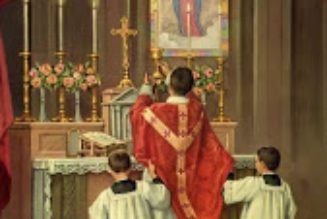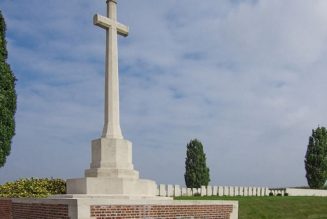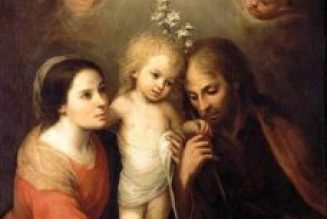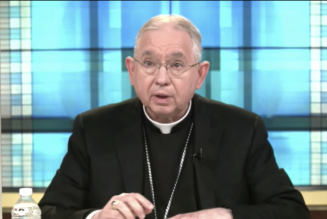Aug. 14 is the feast day of St. Maximilian Kolbe, a saint best known for his heroic martyrdom at Auschwitz in 1941, when he volunteered to be executed in place of another prisoner.
Like many Catholic saints, there exist today relics of Father Kolbe — pieces of a saint’s body (first-class) or objects they owned (second-class) that are honored by the Catholic faithful because of the saint’s closeness to God.
But in Kolbe’s case, the only part of his body that still exists is his signature long beard, which a fellow friar managed to save before the saint’s death. The rest of his body was incinerated in the ovens of Auschwitz after the Nazis murdered him.
Today, relics of Kolbe’s beard hold special significance for Father John Paul Mary, MFVA, who serves as EWTN employee chaplain. The friars of the Francscan Missionaries of the Eternal Word keep a relic of Kolbe’s beard, gifted to EWTN, on the television set while taping their weekly EWTN show “Life on the Rock.” (EWTN is the parent company of CNA.)

Kolbe, also a Franciscan friar, chose to keep the beard he had grown upon his return from six years of missionary work in Japan. In those days, it was customary for missionaries to grow long beards, and Kolbe wanted to keep it as a reminder of his missionary days and as a reminder to always be a “missionary” of the Gospel.
Kolbe eventually, after the 1939 Nazi invasion of Poland, made the decision to shave so as not to stand out. Kolbe’s founding of the Militia Immaculata (MI), an evangelization movement identifying with Mary, had put him high on Nazi watchlists.
After a fellow friar cut off Kolbe’s beard for him, the friar at first tried to save the beard, but Kolbe objected and told him to throw it in the stove. So, obediently, the friar threw it into the stove, but the fire was not lit, so the friar later retrieved it and stored it in a pickle jar, where it was later rediscovered and identified thanks to the label the friar had put on the jar.

“There’s something in particular in his life that mirrors the life of Christ. It’s like that lamp that can’t be kept under a bushel basket but has to be kept up high so that others may see the light,” Father John Paul told CNA.
“I think that’s true in every single saint … not just canonized saints, but really every single human person, all the baptized, have a particular grace that God wants to work in and through them.”
Kolbe’s inspiring example of love and charity during his imprisonment and death by carbolic acid injection have led many to seek his intercession for those battling substance abuse. Father John Paul said he frequently prays for those struggling with addiction when he is before Kolbe’s relic and that the friars work with recovering drug addicts through the Catholic ministry Comunità Cenacolo.
Father John Paul drew a comparison between St. Maximilian Kolbe and Mother Angelica, the foundress of EWTN, emphasizing their shared vision of harnessing modern media for evangelization. Mother Angelica founded EWTN in 1981 as a television station aimed at sharing the Catholic faith, building it over the decades into the largest religious media network in the world — similar to how Kolbe tirelessly utilized the then-modern forms of media like magazines, pamphlets, and radio to spread the Gospel from the monastery he established at Niepokalanów, Poland.
In addition, Father John Paul said Kolbe’s spiritual practices — such as making frequent visits to Jesus in the Blessed Sacrament and his promotion of consecration to Jesus through Mary — align with the Franciscan spirituality practiced by the friars at EWTN.
When praying with relics, Father John Paul noted that the saints, who are in God’s presence in heaven, serve as a conduit through which God’s light shines, guiding the faithful toward holiness — a goal for every Catholic to strive toward.
“The relics of the saints are really the treasure of the Church. That’s what the saints are, the treasure of the Church,” Father John Paul said.
“The lives of the saints give us, I think, a ray of light of Christ’s life and death and his resurrection … I think that’s really the story of [Kolbe’s] life,” he continued.
“It’s laying down his life in charity and love for another man. That’s the Gospel message. No greater love than a man has than to lay down one’s life for one’s friends. And Jesus is the supreme example of that.”







